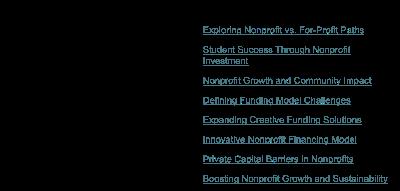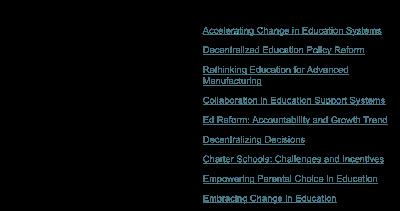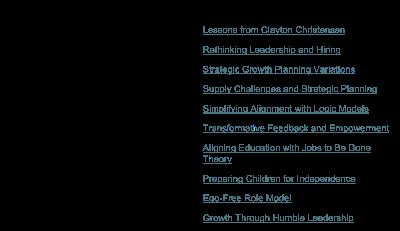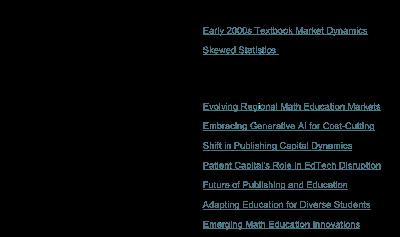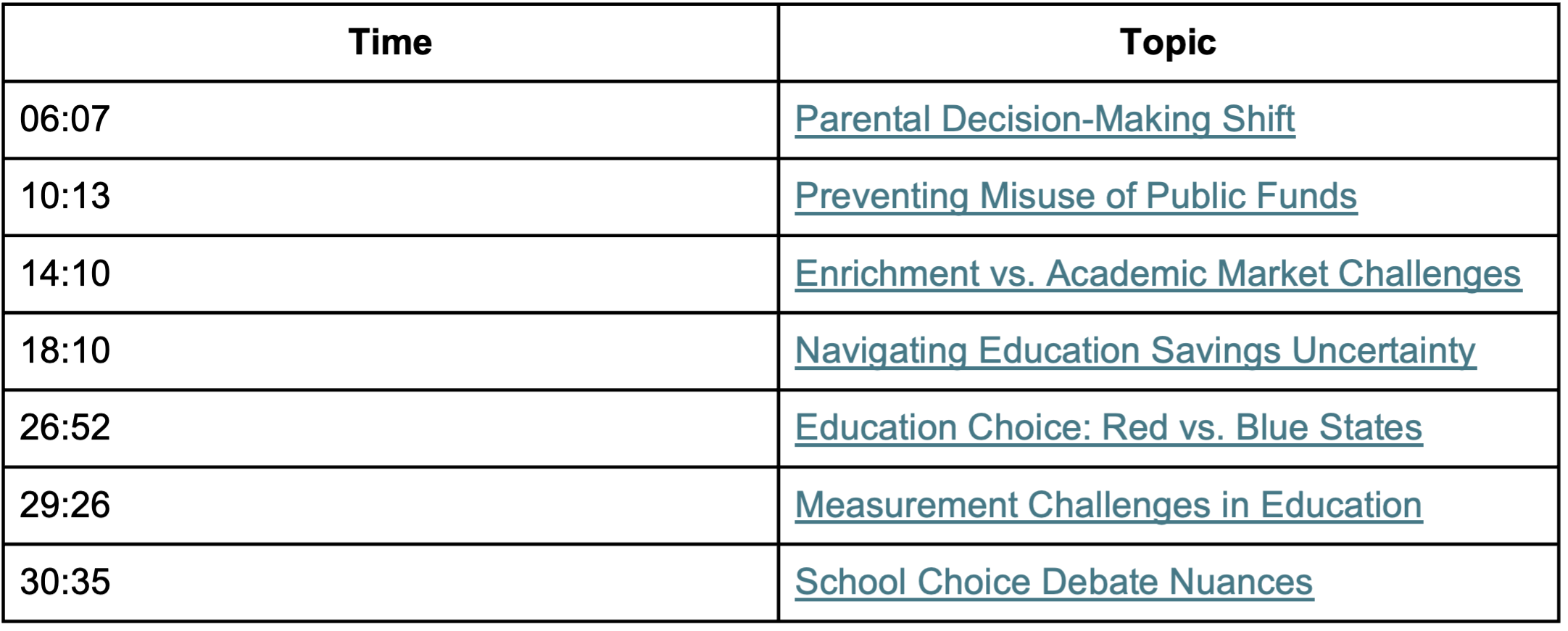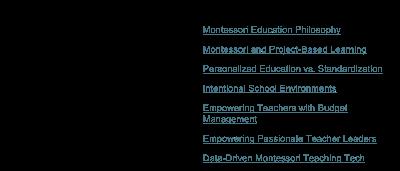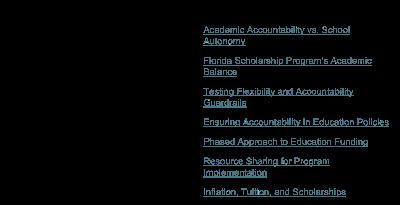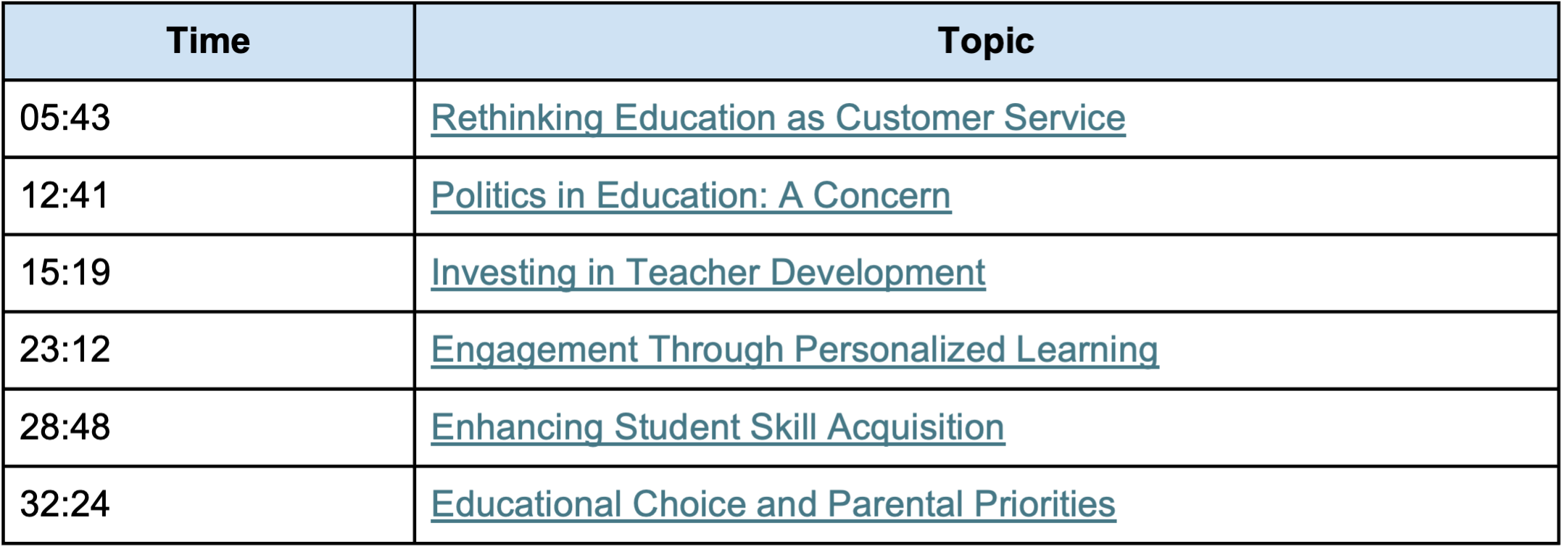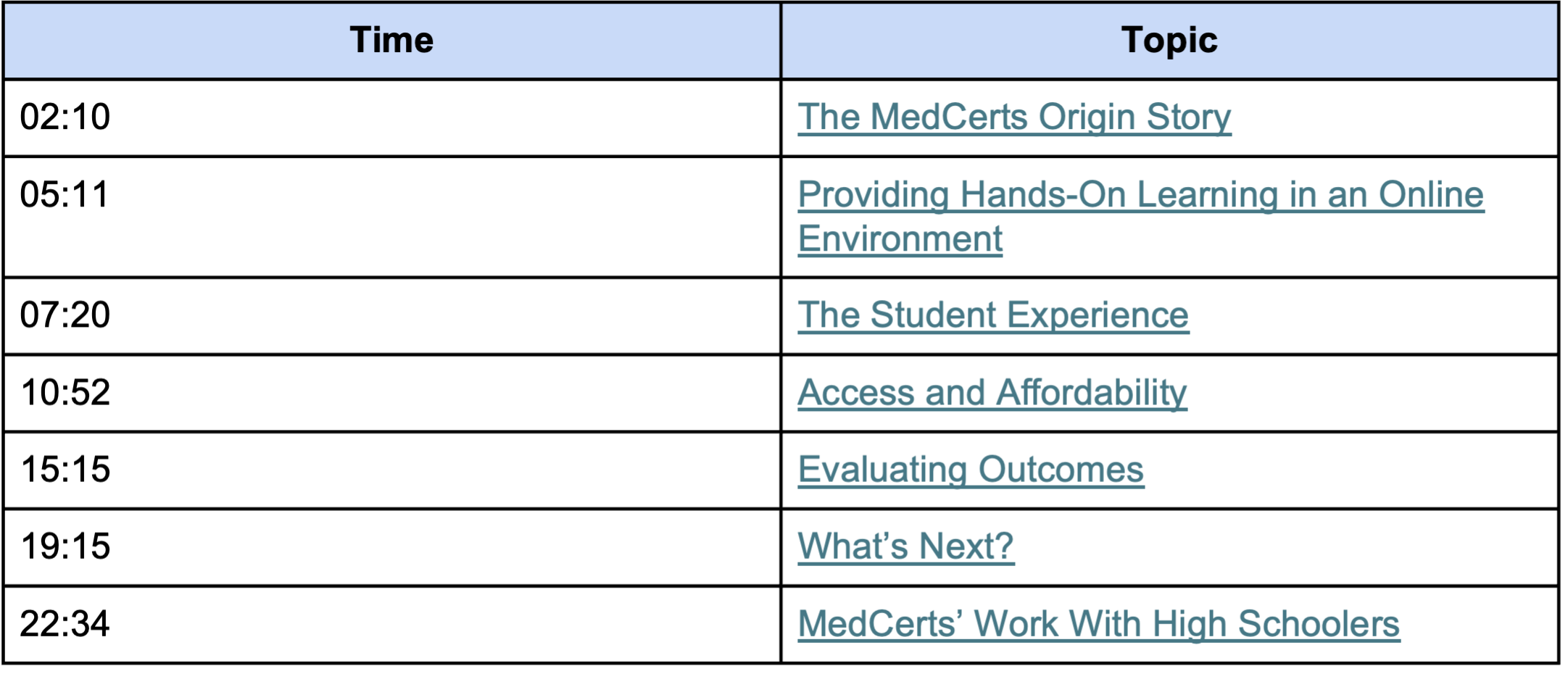Why We Need New Ways To Invest in Education Organizations
Description
Callie Riley of Cambiar Education, Ashley Beckner of Lemnis, and Matt Haldeman of DCDO join me to explore the evolving landscape of funding mechanisms for education organizations. Our conversation dove deep into the limitations of traditional nonprofit and for-profit funding pathways, as we highlighted how new, creative financing models can unlock greater impact, sustainability, and innovation. The guests shared insights from their respective organizations and discussed the need to expand the “menu” of capital options, especially for nonprofits navigating growth and scaling challenges. I see this as the beginning of a series of important conversations we need to be having—and hopefully we’ll see more of these folks discussing this in other venues over the next couple years.
Michael Horn
Welcome to the Future of Education. I'm Michael Horn. You're joining the show where we are dedicated to creating a world in which all individuals can build their passions, fulfill their potential, and live lives of purpose, which we are not anywhere close to, sadly. But the folks that we're going to talk to today are dedicated to helping create that world. We're going to hear more about that. But I want to give a little bit more of an intro than I normally do to these conversations because we're going to be talking a lot about the mechanisms for funding education organizations, both for profit and nonprofit. And as I see it, those mechanisms have expanded in some creative ways over the last several years.
Exploring Nonprofit vs. For-Profit Paths
And yet, in my view, there are still too many limitations from the available funding vehicles that exist that sort of constrain or compel these organizations to act in certain ways that either might not be in their interest or frankly, the interest of the positive impact that they hope to ultimately have. I've written about this before (see here). If you subscribe to my substack, you've read it. But I'm also not the only one who feels that way. And our three guests today are all working to offer different forms of financing in the market to really achieve a variety of aims. And our purpose today is to start to unpack how enlarging the pie for these different vehicles and introducing these different types of funding models can help several different groups. One of those is existing nonprofits in the education space. A second would be founders or entrepreneurs who are starting an education organization.
And they feel like they have to debate between non profit on the one hand and for profit, and then feeling like if they go for the for profit route, that that necessarily implies that they're going to have to take VC money at some point. And then the third, of course, is funders themselves, folks looking to deploy capital and get some combination of perhaps market returns and, or impact, whether philanthropically or through some other vehicle. And our purpose in today's conversation is really to unpack at a high level the opportunities for each of these folks, why the work that my three guests are doing could be exciting, why the status quo perhaps is a little too limiting and, and understand if these visions, you know, if, if what they're painting is so exciting, why isn't it happening quicker? What are the barriers to really realizing them? And I will say all of us, all four of us in today's conversation, we hope that if you're tuning in, if you're listening and you get excited by any of this, or you have questions about any of this that you'll reach out so that we can continue and frankly deepen the conversation significantly. Because I think it's fair to say that we all believe that there are some really exciting organizations that exist today that are doing breakthrough work on their teams that would benefit from alternative capital sources or structures and that there's going to be new organizations to come that could benefit from these things as well. And some folks might be very happy also with the status quo. This is not a sort of anti, it's a how do we enlarge the pie conversation. So with that as a longer prelude than usual on the show, let me introduce our guests. We've got Callie Riley.
She's the managing director at Cambiar Education and nonprofit education venture studio that is focused on student success for all. Cambiar has a goal of enabling a life changing impact for 1 million of the most vulnerable youth through their efforts. They do this through both supporting entrepreneurs to develop, pilot and scale their bold ideas, as well as to directly run initiatives that they do that build entrepreneurship, critical partnerships and innovative communities. So, Callie, great to see you. Thanks for joining.
Callie Riley
Thanks for having me, Michael.
Michael Horn
Yeah, you bet. And then our second guest is Ashley Beckner. She's managing director at Lemnis, a public charity that was recently established following the sale of the majority of NWEA's assets to HMH. Lemnis envisions a future of the unlimited learner where every young person can thrive in a time of dramatic change. Certainly describes right now. And they invest in and partner with organizations that share a vision for this future. So Ashley, good to see you.
Ashley Beckner
Thanks Michael. Excited to be here.
Michael Horn
Yeah, no, I'm glad to have you as well. And then our third is Matt Haldeman. He's the founder of DCDO, which stands for Dot Com Dot Org. It's a mission-driven organization that invests exclusively in nonprofits. And DCDO recently partnered with Lumos capital to help 501c3s increase their impact by transitioning into a public benefit corporation or spinning out a separate for profit entity. So Matt, great to see you.
Matt Haldeman
Thanks, Michael. Looking forward to the conversation.
Michael Horn
Yeah. And hopefully you all feel that way at the end of it as well. So let's, let's dive in. I actually want, like I said, a bunch of words, but I'd love you to deepen what I just said and in the introductions of each of you and talk really about the models that you've set up or are in the process of setting up and really the mechanics of how they work, who they're for, and so forth. Why don't we go in order of how I just introduced you, Callie, Ashley, and then Matt.
Student Success Through Nonprofit Investment
Callie Riley
Thanks Michael. I'll try to make this as short as I possibly can without all of my normal slides. So Michael gave a great introduction overview of Cambiar and my portfolio at Cambiar is focused on enabling 20 million students to experience directly or indirectly nonprofit-developed, high-quality instructional materials leading to increased positive student outcomes, particularly at the margins. So we're doing this by investing in key nonprofit HQIM developers to demonstrate the impact and increase the scale of their products and services as well as strengthening the sustainability of their organizations overall because we believe they're critical to keeping the sea level of quality high in the curriculum ecosystem. So critical to this has been the development of our Impact First HQIM Accelerator Fund officially launched this year, which has a range of investment vehicles that we can stack to provide long-term, patient, cost-effective, flexible capital to support scaling and sustainability of the nonprofits we support and incentivize key behavior and business shifts. So these vehicles include that we are able to stack operating grants, which use more flexible catalytic dollars to build capacity for newer but essential business operations, exploratory efforts such as early R and D for new products, convertible grants—so used primarily to drive shorter-term revenue, profit growth like new product development, new strategies essential to high growth opportunities, core operational shifts in their business models but with near-term metrics to drive innovation on time delivery and budget efficiencies and then two vehicles to support longer-term plans and strategic initiatives that are essential to impact scale and sustainability. The first is low-interest term loans never above half the market rate with very favorable repayment terms used primarily to fund organizations within their risk adjusted debt capacity. And the second is a recoverable loan so used primarily to fund organizations beyond their debt capacity.
And again, we combine those together. We engage in a pretty intensive strategy —operational financial diligence—with organizations that meet our pipeline criteria. So nonprofit core HQIM is starting an ELA in science right now to assess their long term plans, corresponding to the need debt capacity to create that package that we believe will help them reach their long term goals. And I'd be remiss that I didn't mention, too, that as part of the way we think about our investment package, we're also providing support in the way of complementary research and evaluation investments for all those who we invest in so they can help them demonstrate their impact and efficacy of their products and services as well as technical assistance and capacity building for the duration of our multi year partnership.
Michael Horn
Awesome. Actually before Ashley, you get in just two quick follow-ups there.
I think it's interesting the research piece because that's a huge hole we always hear is right like entrepreneurs, they want to show the impact but they can't. So I'd love you just to quickly double

